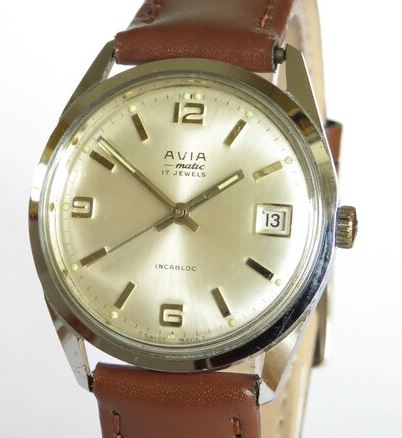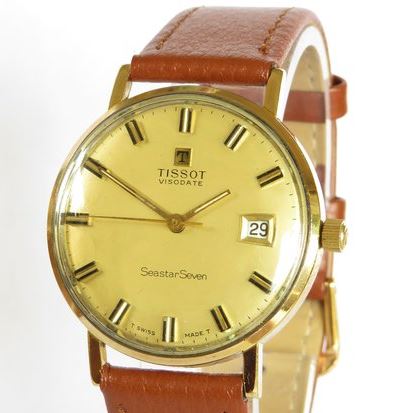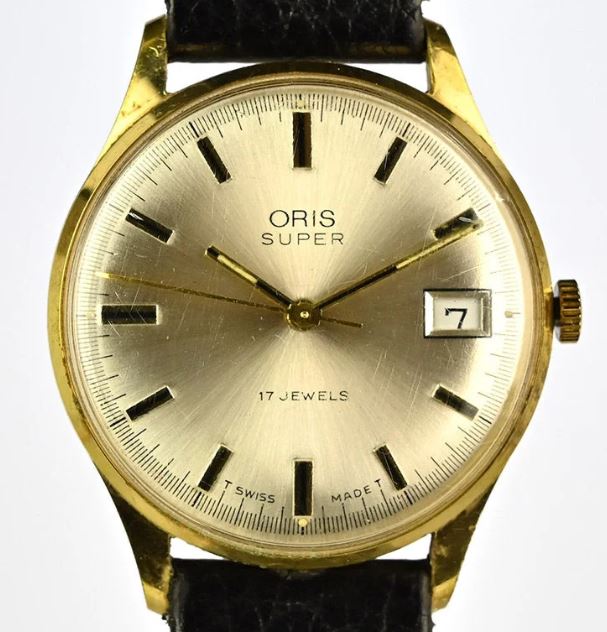Last Updated on June 22, 2024 by Jason
A vintage mechanical watch is powered by the mainspring and will only run if the mainspring is wound to some degree. The mainspring is wound either by hand or by a self-winding mechanism, i.e. an automatic movement. Normally, a mechanical watch has a 40 to 48-hour power reserve on a full wind. This means to keep your vintage watch running, you either need to manually wind it by turning the crown or by moving it often enough to trigger the automatic self-winding mechanism. Either way, if you take the watch off and leave it sitting in a drawer, it will run out of power in approximately two days.
The thought of manually winding a watch each day might be enough for some people to consider switching to a quartz movement. This is fair enough, a quartz watch will happily run for several years before a battery change is required. Additionally, it is almost certain that a quartz movement will be more accurate than any mechanical movement. However, vintage watch aficionados will appreciate the charm and routine of winding a mechanical watch daily. It isn’t a difficult task, but in this post, we will try to explain how to wind a mechanical watch without causing any harm to the watch itself.
How to wind a hand wound mechanical watch
The first thing to remember is to never wind your vintage watch while you are wearing it. Always, take it off, hold it in one hand and wind it in the other. The reason is, that you will undue pressure on the winding stem and the crown. This is because, winding the watch when it is on your wrist, requires you to lift the crown to wind it. The inner tube of the crown is a delicate component and it can easily be bent if undue force is placed upon it. Additionally, the winding stem could snap if forced to wind at the wrong angle.
Hand-winding is a simple task that needs to be built into your daily routine. I take off my watch before showering, whether it is waterproof or not. When I dress, I take my watch and wind it manually before strapping it on. It takes less than a minute and preserves the integrity of the winding mechanism.
Note, that some watches have a screw-down crown, particularly those that are waterproof. If your watch has one, you need to unscrew the crown until it pops into the neutral position before the watch can be wound. Don’t forget to screw the crown down when you have finished winding.
Winding
When winding, grip the crown between your thumb and index finger and start winding it away from you. There’s no need to be overly careful, the mechanism has been designed for precisely this task. If your watch is vintage, this will have been performed thousands of times over its lifetime. However, don’t use brute force and take your time to wind it.
After a while, you will feel some resistance building up. Slow down until you reach the point that the crown cannot be wound any further. There is a myth about “overwinding”, but this simply isn’t possible. However, if you force the crown after it stops turning, it is possible to break or damage the mainspring. Commonsense and experience will tell you when the watch is fully wound.
Crown
It is not unusual with vintage watches to discover that an original crown has lost most of its grip, because the grooves have worn away through years of use. This can prove frustrating as it can be difficult to grip and turn the crown. In this case, the only practical option is to replace the crown. This could be with a generic crown, which will impact the originality of the watch or with a signed vintage crown if one can be sourced. The signed crown will inevitably be more expensive and although not truly original, it will be much more appealing to collectors. If you can’t replace a gripless crown, the remaining option is to buy a watch crown winder tool, but this is not a long-term practical solution.
Ideally, if the watch is to be worn daily, it should be fully wound, each day at the same time for peak performance. Winding at the same time each day helps with consistent timekeeping and reliability. It is not necessary to wind the watch if you are not wearing it on a particular day. Likewise, if the watch is in storage, it doesn’t need to be wound daily, but a periodic wind, once per month, is good to ensure the lubricants don’t settle.
How to wind an automatic watch
An automatic watch winds itself when you’re wearing it. The movement of your wrist causes a weighted rotor to swing which winds the watch. There is a clutch-like mechanism in place to ensure the rotor swings freely when the watch is fully wound. If you haven’t worn your automatic watch for a while, it may need assistance to prime the mainspring.

In some cases, particularly in older vintage automatics, the movement can only be wound by the self-winding mechanism. In this case, rotate the watch in your hand for 30 seconds or so to prime the movement. Once, the watch starts ticking, set the time and strap it to your wrist. It could take as long as a day to fully wind using the self-winding mechanism. More modern automatics can be wound by the self-winding mechanism or manually via the crown. Generally, winding the crown 20 times should be enough to prime the mainspring.
How to Set Your Watch
The process for setting the time on manual-wind and automatics is the same. Remember, if the watch has a screw-down crown this will need to be unscrewed (anti-clockwise) before setting the time. To set the time on the watch gently pull out the crown. For a watch that displays the time only, there will be a single click before you reach the time setting position. A watch with complications will have a series of clicks. Generally, the furthest setting or “click” will be the time setting position. Once the crown has reached the final “notch/click”, turn the crown clockwise or counter-clockwise to set the hands. The time can be set by moving the hands forward or backwards. Push the crown into the original position to complete the time setting. If the watch has a screw-down crown, remember to screw (clockwise) the crown in, otherwise, the water resistance could be compromised.
Summary
Winding and setting the time on a vintage watch is a relatively simple task. Follow the instructions above and you will master the task in no time. Include the task in your daily routine and enjoy wearing your vintage watch. Hopefully, this post has taught you all you need to know about how to wind a vintage watch.
Related content
How to wind a watch at wikiHow.



Leave a Reply